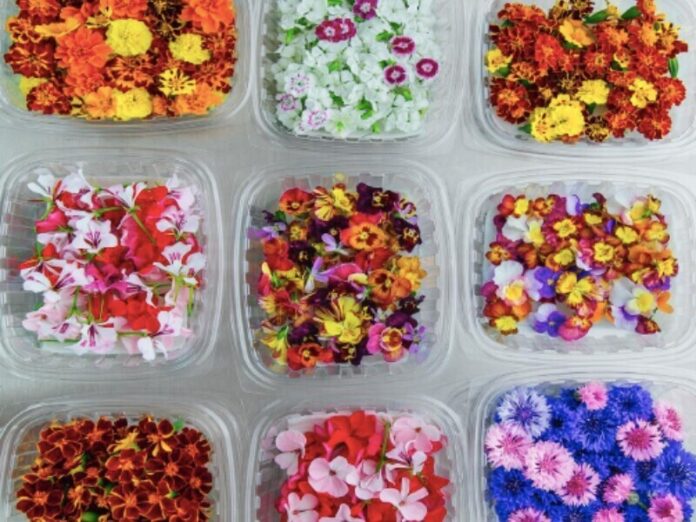
Have you had a latté from Brass Horn Coffee garnished with beautiful and edible Violas? Or ‘The Primrose Cocktail’ at Primrose Table? Or the 21-Day Aged Duck at Catbird Seat in Nashville? Then you have tasted the handy work of Matt Miller, owner of Sow and Harvest Farms in Murfreesboro.
Miller grew up farming and following a healthy lifestyle. He had been looking for a way to combine his love of both when a friend introduced him to vertical farming in 2017. It is a non-traditional form of container gardening. According to cognitoforms.com, “Farmers stack their crops on indoor racks, enabling them to produce more food within a smaller space. They also use up to 95% less water than with traditional farming methods.”
By 2018, Miller had converted the garage on his one acre of land into a microgreen farm. As demand has increased for his microgreens, he has added a number of greenhouses.
He started selling his microgreens through doctors whose patients were looking for healthier foods, according to cognitoforms.com, as well as through their website. In 2019, Miller and his girlfriend, Carter Marie Elliott, started having a booth at MainStreet Murfreesboro’s Saturday Market. Next came the partnerships with local chefs in the culinary scene in Nashville, Franklin, and Murfreesboro. In addition to supplying them with microgreens, Miller also produces edible flowers and select vegetables for their gourmet menus.
In recent years, the market for microgreens has exploded. USDA.gov noted, “Microgreens began showing up on chefs’ menus as early as the 1980s, in San Francisco, California… Today, the United States microgreens industry consists of a variety of seed companies and growers.”
“’Microgreens’ is a marketing term used to describe tiny, tender, edible greens that germinate in soil or a soil substitute from the seeds of vegetables and herbs,” says the USDA website. “Smaller than ‘baby greens,’ and harvested later than ‘sprouts,’ microgreens can provide a variety of leaf flavors, such as sweet and spicy. They are also known for their various colors and textures… The seedlings are well suited for local growers because microgreens are harvested just seven to 14 days after germination… Among upscale markets, they are now considered a specialty genre of greens that are good for garnishing salads, soups, plates, and sandwiches.”
Miller is always experimenting with perfecting new products. “We have been busy perfecting new varieties full of amazing flavors,” he says on his Facebook page. “I don’t think most know how much time goes into just one single variety. Since most of these plants are not native to our country, it can take months of trying to recreate their nature in the environment. We have spent two years on one single plant. There are still varieties that are challenging to get right, but it’s worth it to give the amazing chefs we work with new flavors and textures to work with. Our attention to detail will always be our top priority.”
Sow and Harvest Farms’ greens are organically grown with no pesticides, no herbicides, and no synthetic fertilizers. They also use natural insect control, like ladybugs.
“I’ve never loved ladybugs more until I started growing indoors,” Miller noted on Facebook. If you have any plants inside, it’s just a matter of time before mites show up and infest your grow rooms. With no natural predators, they thrive and quickly multiply. By introducing beneficials like ladybugs and lacewings, it balances out the ecosystem. After losing many plants over the years, I will never go without these amazing insects.”
Research done by the USDA shows that they are super rich in important antioxidants, flavonoids, vitamins, minerals, and nutrients. “They have anywhere from four to 40 times as many vitamins and nutrients as mature or full-grown vegetables, and they contain many elements that are known to help prevent multiple conditions and diseases,” says the Sow and Harvest website.
“I have loved finding the best and cleanest ways to grow some of the healthiest foods you can find,” added Miller, “all while keeping the environment an equal priority. Growing and tending to plants is such a humbling and honest way to work.”















